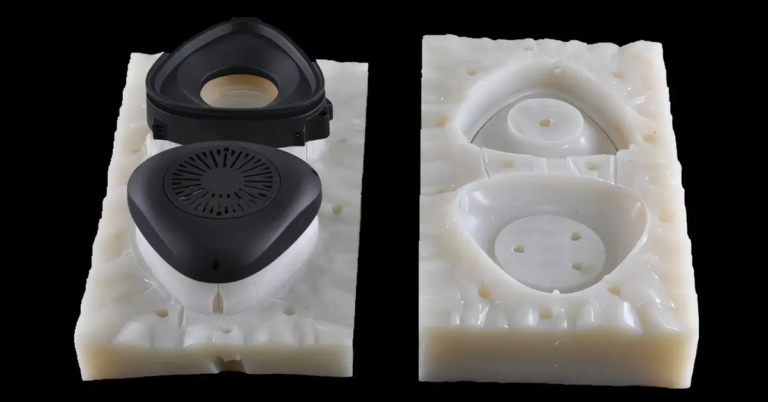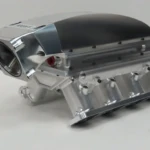Choosing the right CNC machine for your project is a critical decision. The two most common contenders are CNC milling machines and CNC milling machines. While both are valuable tools for automating cutting, they are fundamentally different machines best suited for different applications. Understanding these differences is critical to ensuring you choose a machine that can deliver the accuracy, efficiency, and quality your project requires.
This article takes an in-depth look at the key differences between CNC milling and CNC milling to help you make an informed decision. We’ll explore their capabilities, limitations, and ideal applications, as well as factors such as material compatibility, accuracy, and cost.
Learn the basics
At their core, CNC mills and milling machines are computer-controlled machines that use rotating cutting tools to remove material from a workpiece. They follow precise instructions generated by CAD/CAM software to transform digital designs into physical objects. However, the similarities basically end there.
Main differences:
-
Structure and stiffness:
-
CNC milling machine: The frame of a milling machine is stronger and stronger than a milling machine. This heavy-duty construction is critical to handling the forces generated when machining harder materials like metal. The frame is usually made of cast iron or steel, providing excellent stability during operation. This inherent rigidity translates into greater accuracy and less vibration, resulting in a smoother surface finish and tighter tolerances.
- CNC milling machine: Routers typically have a lightweight frame, often made of aluminum or steel tubing. While adequate for softer materials, this lighter construction makes them more susceptible to vibration and deflection when handling denser materials. Compared with milling cutters, reduced rigidity limits the accuracy of milling machines, especially at higher feed rates and depths of cut.
-
-
Spindle power and speed:
-
CNC milling machine: Milling machines usually come with more powerful spindles than milling machines. These spindles are designed to deliver high torque at lower speeds, allowing them to cut tough materials efficiently. Most milling machines have a wider speed range and can also be optimized based on the material being processed. This is especially important when working with materials that require slower cutting speeds to avoid heat build-up or damage.
- CNC milling machine: Milling machines feature high-speed spindles, often exceeding 20,000 RPM. This high speed is ideal for cutting softer materials such as wood, plastic, and composites. However, the lower torque of a mill spindle limits its ability to effectively cut thicker or denser materials. While some routers offer variable speed control, the range is typically narrower than on milling machines.
-
-
Cutting tools:
-
CNC milling machine: Mills use a variety of cutting tools, including end mills, ball nose mills, face mills, and drills. These tools are typically made of high-speed steel (HSS) or carbide and are designed for specific machining operations, such as roughing, finishing, drilling and tapping. The milling machine’s wide range of tool options enables highly customized material removal strategies.
- CNC milling machine: Routers primarily use milling cutters and are designed for edge profiling, engraving and cutting panels. While there are a variety of milling cutter shapes available, they often lack the versatility of a milling cutter. Milling cutters are typically made of high-speed steel or carbide and are optimized for high-speed cutting of softer materials.
-
-
Material Compatibility:
-
CNC milling machine: Milling machines excel at processing a variety of materials, including metals (aluminum, steel, stainless steel, titanium), plastics, composites, and even some ceramics. Their robust construction and high-torque spindle enable them to handle the demanding cutting conditions associated with harder materials.
- CNC milling machine: Routers are best suited for cutting softer materials such as wood, plastic, foam, composite materials such as MDF and plywood, and non-ferrous metals such as aluminum (limitations apply). While some high-end routers can machine aluminum, the cut quality and efficiency are usually not as good as with milling machines. Avoid trying to machine steel or other hard metals on a milling machine.
-
-
Accuracy and Tolerance:
-
CNC milling machine: Milling machines are capable of much higher precision than milling machines. Their rigid construction, precision ball screws, and advanced control systems allow them to maintain tight tolerances of +/- 0.001 inch or tighter. This makes the milling cutter ideal for applications that require intricate details and a tight fit.
- CNC milling machine: While modern CNC milling machines are capable of producing precise parts, they often cannot match the precision of a milling machine. Typical tolerances for routers range from +/- 0.005 inches to +/- 0.010 inches, depending on the machine, material, and cutting parameters.
-
-
application:
-
CNC milling machine: Milling machines are widely used in industries that manufacture precision parts, including aerospace, automotive, medical, and mold making. They are ideal for creating complex geometries, complex features and parts requiring tight tolerances.
- CNC milling machine: Routers are commonly used in woodworking, sign making, cabinet making, plastic fabrication, and prototyping. They are ideal for cutting large pieces of material, creating intricate engravings, and producing parts with complex contours.
-
-
cost:
-
CNC milling machine: Generally speaking, CNC milling machines are more expensive than CNC milling machines because they have a sturdier structure, higher precision parts, and are more powerful. The initial investment in a milling machine may be much higher, but the long-term benefits in accuracy, material compatibility, and durability often outweigh the cost.
- CNC milling machine: CNC routers are generally less expensive than milling machines, making them a popular choice among hobbyists, small businesses, and educational institutions. The lower cost makes routers easier to use, but it’s important to consider limitations in material compatibility and accuracy.
-
Consider five-axis machining
Both CNC mills and CNC mills are available in multi-axis configurations. Notably, five-axis CNC machining significantly enhances the capabilities of both machine types.
-
Five-axis CNC milling: Five-axis milling can machine complex geometries with greater efficiency and precision. This is critical for industries such as aerospace and medical, where complex parts with intricate curves and undercuts are common.
- Five-axis CNC milling: Five-axis milling expands design possibilities for woodworking, signmaking and composite manufacturing. It allows for sculpting, complex surface design, and the creation of more complex three-dimensional shapes.
Gretel: Your five-axis CNC machining partner
GreatLight specializes in precision five-axis CNC machining, utilizing state-of-the-art equipment and advanced production techniques to deliver high-quality metal parts. With our expertise in metal parts manufacturing, we offer comprehensive solutions including post-processing and finishing services. We use a variety of materials and offer quick customization to meet your specific needs. For precision machining that requires the highest standards, Honglaite’s five-axis CNC machining is the ideal choice. Contact us today for a competitive quote and let us turn your design into reality.
in conclusion:
The choice between a CNC mill and a CNC mill depends largely on your specific application. If you require high precision, are processing hard materials like metal, and need to produce complex geometries, then a CNC milling machine is a better choice. However, if you primarily work with softer materials such as wood or plastic, need to cut large panels, and have less stringent accuracy requirements, a CNC mill may be more suitable and cost-effective. Carefully consider the material you want to machine, the tolerances required and your budget to make the decision that best suits your needs.
FAQ
Q: Can I use a CNC mill to cut metal?
one: Although some high-end CNC milling machines can cut non-ferrous metals such as aluminum, the cutting quality and efficiency are usually not as good as those of milling machines. It is not recommended to machine steel or other hard metals on a milling machine or you may damage the machine.
Q: What is the typical service life of a CNC mill or milling machine?
one: The lifespan of a CNC mill or milling machine depends on a variety of factors, including the quality of the machine, frequency of use and level of maintenance. With proper care and maintenance, a high-quality CNC mill can last 10-20 years or more, while a CNC mill can last 5-10 years.
Q: What software is required to operate a CNC mill or milling machine?
one: You will need CAD (computer-aided design) software to create the design and CAM (computer-aided manufacturing) software to generate the G-code that controls the machine. Popular CAD/CAM software options include Fusion 360, Mastercam, and SolidWorks CAM.
Q: What maintenance does a CNC mill or milling machine require?
one: Regular maintenance is essential to ensure the longevity and accuracy of your CNC mill or milling machine. This includes lubricating moving parts, cleaning the machine, inspecting and replacing worn parts, and calibrating the machine.
Q: How much does a CNC mill or milling machine cost?
one: The cost of a CNC router or milling machine can vary greatly depending on size, features, and manufacturer. Entry-level CNC mills start at about $1,000, while high-end industrial mills can cost $100,000 or more.
Q: What safety precautions should be taken when operating a CNC mill or milling machine?
one: Safety is of the utmost importance when operating a CNC mill or milling machine. Always wear appropriate safety glasses or face shield and hearing protection. Make sure the machine is properly grounded and all safety guards are in place. Never put your hands into the machine while it is running, and always disconnect the power supply before performing any maintenance or repairs. Please be completely familiar with the machine’s operating manual before use.










































